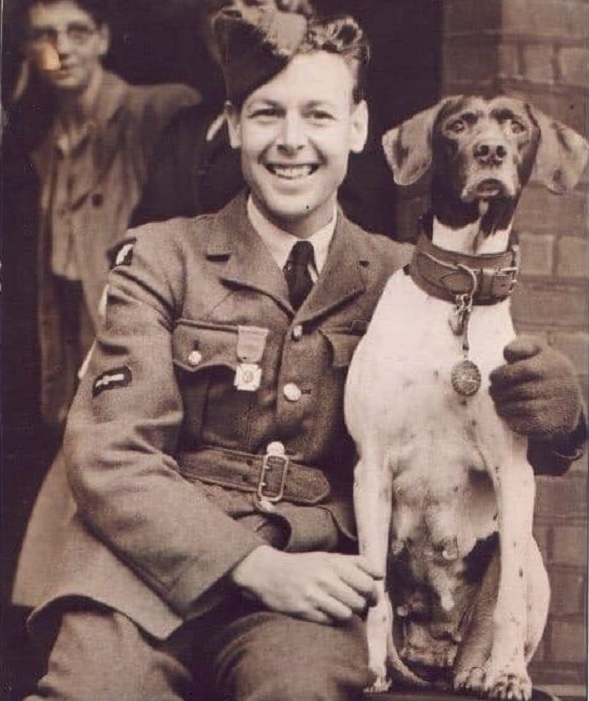Animals have always been at the center of the human experience — from our first upright steps as hunters and gatherers, through the era of domestication, and into the industrial and technological ages. Throughout the arc of human history, animals have served us as companions, sentries, herders, hunting partners, laborers, soldiers, and in countless other roles. And as we proudly support the sacrifices of men and women who’ve served our military or other closely related national defense programs on this Veteran’s Day, it’s our duty to offer more than a head pat or a neck rub to the animals who’ve been enlisted to defend American safety, security, and democratic values. It’s time we salute them. Animals have died by the millions for our country during combat and crisis. Their collective sacrifices are one of the first ingredients of our freedom.
From the Revolutionary War through the Civil War and into the Great Wars of the first half of the 20th century, animals have been at the front edge of battle. It is said that some 16 million animals served in World War I. There was no cavalry without the horse. Horses also pulled artillery. Mules and donkeys carried weapons, food, and other necessities of war. Camels in North Africa carried the wounded from the battlefield. Pigeons delivered messages and allowed for essential shifts in battle plans. Other animals provided comfort to troops and lifted morale. One of the smallest heroes of WWII transported a communications cable under an airstrip, belly-crawling through a drainpipe, safeguarding 40 U.S. war planes and hundreds of soldiers. His name was Smoky and he served alongside his human soldiers in the South Pacific 5th Air Force.
The first war dog training center for canine soldiers was (and still is) in Front Royal, Virginia where dogs learned to lead human soldiers to those wounded or killed, act as sentries, and serve as scouts and messengers. One trainee named Chips, already wounded in battle, charged into a bunker in Italy, disabled a machine gunner, and neutralized three other enemy combatants. According to John Burman, in A Soldier’s Best Friend; Scout Dogs and their Handlers in the Vietnam War, some 4,000 dogs were deployed to Vietnam and it’s estimated those dogs saved 10,000 lives.
We haven’t always been good to animals during service or once their service has ended. In July 2017, the State Department’s Office of Inspector General (OIG) received a hotline complaint that there were problems with the care of the Explosive Detection Canines (EDCs) provided to Jordan. OIG initiated a full evaluation, and in September 2019, released information that the program was not being managed properly and that dogs were dying from neglect, disease, and heat-related illness, while living in substandard and unsanitary conditions in Jordan.
When animals are asked to help us in combat, to detect explosives, or to take other actions that risk their lives, the least we can do is treat them with dignity and respect and not as inanimate objects, like weapons or other instruments of war.
The Purple Poppy is an international symbol commemorating the deeds and sacrifices of all animals in war. It was started by the Australian War Animal Memorial Organization, and you’ll see it worn alongside the red poppy today commemorating veterans and their brave animal counterparts. I’m wearing mine today.
Indeed, we have relied on their speed and smell, flight and physical power, and controlled aggression and extraordinary bravery. Now tanks, trucks, aircraft, and other machines can do so much of this work, and those innovations spare animals many of the risks of war and other forms of dangerous services. But still we’ve never been able to match the swimming and diving abilities of dolphins or seals or smelling capacity of dogs, and that still makes animals essential actors in our military preparedness, intelligence gathering, and other forms of national defense. While so many of our human soldiers exhibit super-human acts of bravery in service to our ideals, even they stand in awe of what their fellow non-human soldiers do. Just two weeks ago, it was a Belgian Malinois who raced through an underground tunnel and cornered one of the world’s most sought-after terrorists faster than any human or robot could, causing Abu Bakr al-Baghdadi to detonate an explosive and take his life and the children he used as human shields.
In last week’s elections, Texas voters had the chance to change their state Constitution to ensure retired law enforcement animals can be adopted by their handlers, erasing a decades-old requirement that government property must be sold or destroyed when no longer in use. An amazing 94 percent of voters said “yes.” Military animals have for too long faced the same problem, but we are awakening and treating them more like the worthy veterans they are.
Today especially, but every day, thank the veterans and active-duty soldiers you meet for their valor. But also wear your Purple Poppy. Salute the animals who have given or risked their lives for the good of civilization. They serve without pay and are immune to flattery or false pride. They just want our acts of affection and comfort when scared, our stitching and bandaging when wounded, and our determination to find them when lost. They are our comrades and deserve our unceasing loyalty and sacrifice, just as they exhibit in their way with us every minute of every day.
